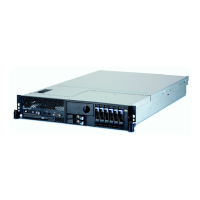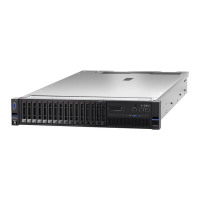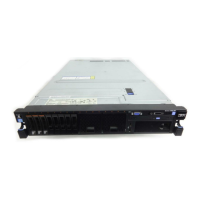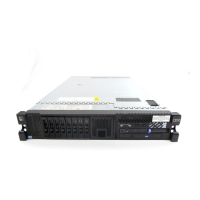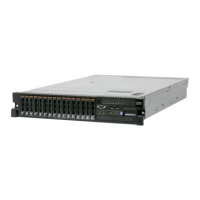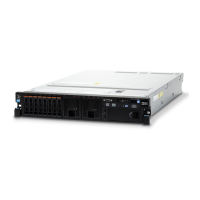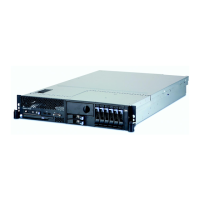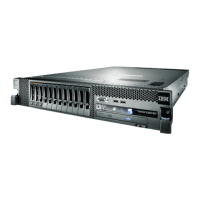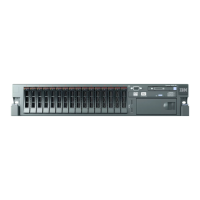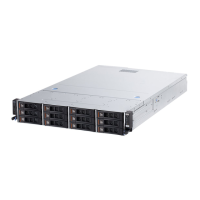Lit: The server is turned on.
Fading on and off: The server is in a reduced-power state. To wake the
server, press the power-control button or use the IMM Web interface. See
“Logging on to the Web interface” on page 146 for information on logging on
to the IMM Web interface.
v Ethernet activity LEDs: When any of these LEDs is flashing or flickering, it
indicates that the server is transmitting to or receiving signals from the Ethernet
LAN that is connected to the Ethernet port that corresponds to that LED.
v Locator button/LED: Use this blue LED to visually locate the server among
other servers. This LED is also used as a presence detection button. You can use
IBM Systems Director to light this LED remotely. This LED is controlled by the
IMM. When you press the locator button, the LED will be lit and it will continue
to be lit until you press it again to turn it off. Press the locator button to visually
locate the server among the others servers. In a two-node configuration, this
LED will be lit on the primary server and this LED will blink on the secondary
server during POST, if the button is pressed or an IPMI command is issued to
turn on the LED. It is also used as the physical presence for the Trusted Platform
Module (TPM).
v Information LED: When this amber LED is lit, it indicates that a noncritical
event has occurred. Check the system-event log for additional information. See
the Problem Determination and Service Guide on the IBM Documentation CD for
more information about event logs.
v System-error LED: When this amber LED is lit, it indicates that a system error
has occurred. A system-error LED is also on the rear of the server. An LED on
the light path diagnostics panel on the operator information panel is also lit to
help isolate the error. This LED is controlled by the IMM.
Light path diagnostics panel
The light path diagnostics panel is on the top of the operator information panel.
For additional information about the LEDs on the light path diagnostics panel, see
Problem Determination and Service Guide.
Note: The system service label on the underside of the cover also provides
information about the location of the light path diagnostics LEDs.
To access the light path diagnostics panel, push the blue release button on the
operator information panel to the left. Pull forward on the unit until the hinge of
the operator panel is free of the server chassis. Then pull down on the unit, so that
you can view the light path diagnostics panel information.
Note: When you slide the light path diagnostics panel out of the server to check
the LEDs or checkpoint codes, do not run the server continuously with light path
diagnostics panel outside of the server. The panel should only be outside of the
server a short time. The light path diagnostics panel must remain in the server
when the server is running to ensure proper cooling.
Chapter 1. The System x3690 X5 Types 7147, 7148, 7149, and 7192 server 19
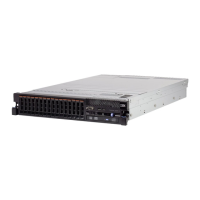
